There are plenty of advantages to this breed. These goats
are hardy and affordable. They're often great with kids. And, Boer goats make
great mothers.
History
The name of this breed was derived from “Afrikaans” a Dutch
word that means farmer. These large and stocky goats are so strong that they
were once used as pack animals in their native South Africa. Boer goats were
developed by Dutch farmers in the early 1900s but did not come to America until
1993.
The Boer goat breed likely stemmed from indigenous goats
kept by the Fooku, Namaqua, and San South African tribes being bred with goats
that shared a cross of European and Indian bloodlines.
From the start, Boer goats were earmarked for meat and not
dairy production due to the stocky bodies and the lean and moist meat they
produced. These goats also showed a remarkably quick growth rate, which was
seen as a boon to the Dutch farmers who kept them.
While this goat breed first appeared in South Africa, a small amount of both Boer and Angora goat embryos were smuggled by out of the
country via a route through Zimbabwe to goat farmers by both Australian and New
Zealand agricultural companies.
The smugglers wanted the Angora goat embryos because this
breed is prized for its mohair production. At the time, snagging of the Boer
goat embryos were merely an afterthought.
The embryos were implanted inside the goat does in New Zealand.
One Australian company that also had some smuggled embryos got into some money
problems and the embryos, as well as offspring, were sent to a New Zealand
quarantine station operator named Rob Moodie.
Moodie dubbed the herd her garnered African Goat Flocks. A
different Australian livestock firm, Australian Breeding Management, wound up
with thousands of both Angora and Boer goats that were ultimately released from
quarantine. All of the Boer goats that first found their way to America come
from the offspring of smuggled embryos cultivated in Australia and New Zealand.
It took decades of deliberate and diligent breeding for the
Boer goat we know today to develop. Keepers staunchly herald the breed’s
superior genetic qualities and consistent production of quality meat.
The very same year that the first known full-blooded goats
of this breeds arrived in the country, the American Boer Goat Association was
established. It did not take long for Boer goat breeding and marketing to hit
an explosive level in the United States.
Boer Goat Uses
While the primary purpose of Boer goats is meat production,
a growing number of people are keeping them as companion pets or show goats.
Known as "gentle giants" due to their large size and laid-back
personalities, these docile goats are great with both children and other
animals.
Boer Goat Reproduction
The high fertility rate of Boer goats helps breeders and
meat farmers recoup the money they spend when investing in a top-quality
breeding pair. When you have a Billy goat that lives up to his potential,
expanding a herd of Boer goats without spending a dime on introducing new stock
into the herd.
Boer goats are capable of breeding capable throughout the
year. Both males and females reach reproductive maturity when they are five
months old. A Boer nanny goat is pregnant for approximately five months and
then nurses her kid or kids for roughly three months, before she can either be
milked or is scheduled for breeding again.
Nanny goats may give birth to only a single kid during her
first pregnancy, but typically, a Boer nanny gives birth to twin kids. The
traditional breeding season for goats occurs in April and May and again from
the final days of summer up to the first days of winter.
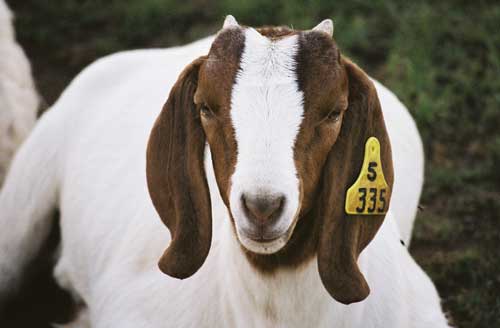 |
| image: yarrabeeboergoats.com |
The Modern Boer Goat
Boer goats have white bodies and distinctive brown heads.
They also have long pendulous ears and are known for having high fertility
rates!
When it comes to cross-breeding meat goat breeds, common
crosses are Boer x Spanish goat, Boer x Angora goat, Boer x Kiko goat, Boer x
Nubian goat, Boer x Sirohi, Boer x Osmanabadi, and Boer x Jamnapari goat.
Boer Goat Facts
- Goats of this breed almost always have a white body and a redhead.
- The ears on Boer goats lop – or hang down in a droopy manner.
- Boer goat horns are thick and curve backward.
- Eyes on Boer goats are almost always brown.
- Mature male Boer goats typically weigh roughly 350 pounds.
- Mature female Boer goats commonly weigh between 190 and 250 pounds.
- Boer goats not only boast a rapid growth rate but also routinely experience an enhanced fertility rate, as well.
- The coveted carcass, personality, and meat quality of Boer Billy goats (or bucks) is often passed onto kids even when the males have mated with cross-bed Boer nannies or female goats from entirely different breeds.
- The most common top-quality meat goat cross-breeds all include Boer goats: Boer and Nubians, Boer and Angoras, Boer and Sirohi, Boer and Kiko, Boer, and Osmanabadi, as well as Boer and Jamnapari.
- Boer goats are known to be hardy, but some keepers may experience increased struggles with internal parasites when raising these animals in hot climates.
- A Boer goat’s average life expectancy is between 8 to 12 years.
Share with Your Friends..
Reference:
https://www.wideopenpets.com/everything-you-need-to-know-about-the-boer-goat/
https://www.thehappychickencoop.com/all-you-need-to-know-about-boer-goats/

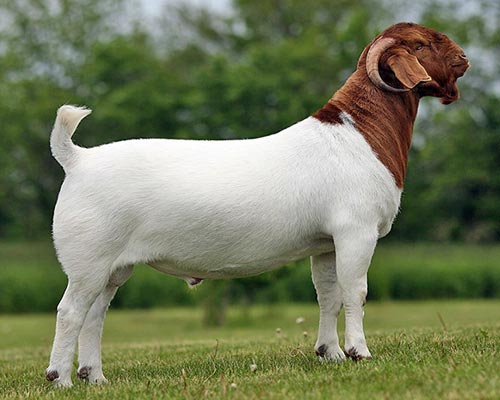
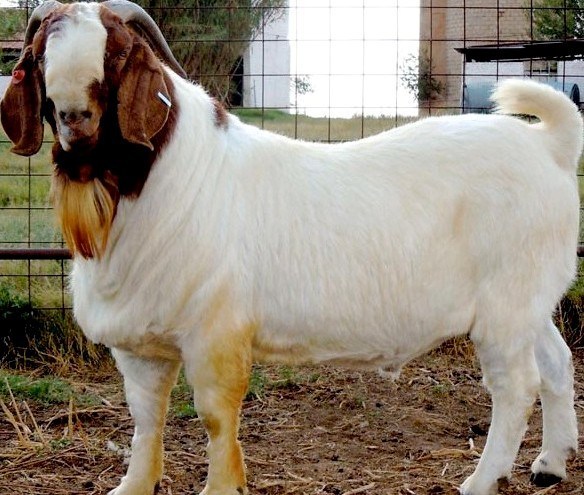
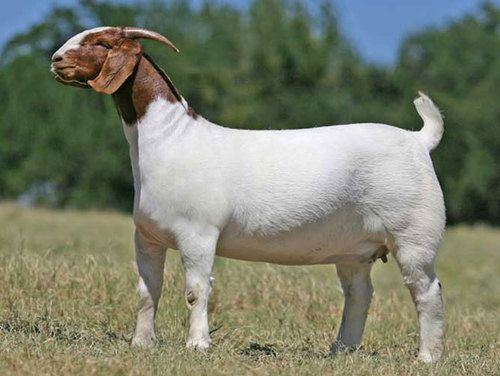
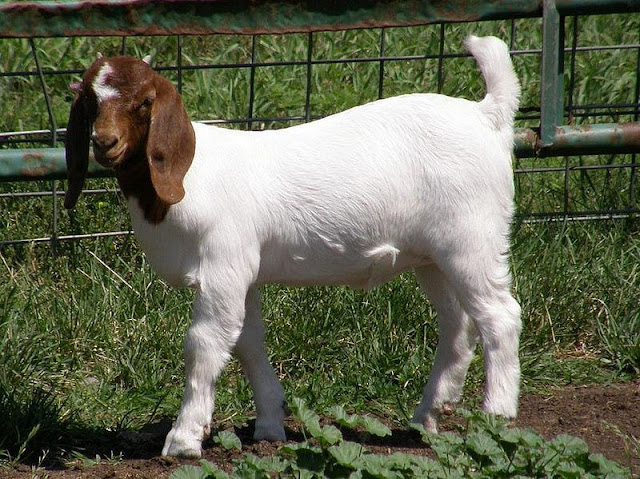













No comments:
Post a Comment